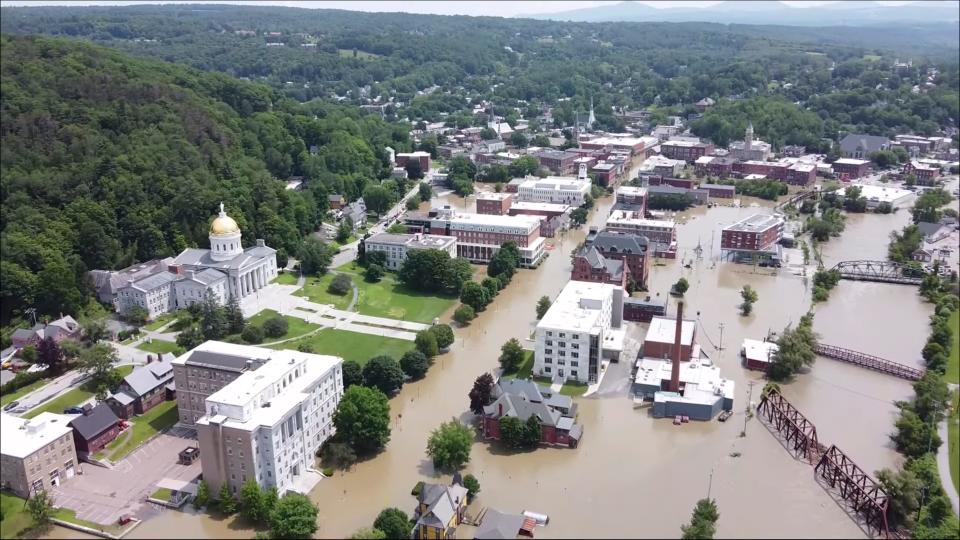Climate-change safe havens can still get hit hard. Vermont's flooding is a reminder.
Two months of rain fell in two days in Vermont and left some towns underwater.
No deaths have been reported, but thousands of homes and businesses have been destroyed.
As the water recedes, officials said the storm shows an ongoing need to adapt to the climate crisis.
This article is part of Insider's weekly newsletter on sustainability. Sign up here.
Vermonters are assessing the damage from the worst flooding in more than a decade after a storm poured down two months of rain in two days.
Between 6 and 9 inches fell in many areas, and drone footage showed the downtowns of Montpelier, the state capital, and Waterbury still underwater on Tuesday. The Winooski River, which courses through those cities, swelled to about 21 feet — 6 feet above flood stage. It was the highest level in nearly a century, when the river reached 27 feet during the Great Vermont Flood of 1927, according to local officials.
Emergency responders have rescued more than 200 people who were stranded in cars and homes. No serious injuries or deaths have been reported in the state, but the damage is extensive. A railroad track in Ludlow is suspended in the air after water washed away the earth beneath it, the Weather Channel's Justin Michaels reported.
The damage in a small state that's not along a coast or sweltering under extreme heat is a reminder that few places — even those considered relatively safe — will be spared the fallout from a changing climate.

Even as water levels recede, more rain is expected on Thursday and Friday.
"The flooding we've seen is historic," Gov. Phil Scott said at a press conference Wednesday. "This may not be over. With rain in the forecast and nowhere for it to go, we could see waters rise again."
Some residents said the flooding was worse than Tropical Storm Irene in 2011, which at the time seemed like an anomaly in the state. Another devastating storm 12 years later might force many Vermonters to reassess their risks, especially as the climate crisis fuels more intense rainfall. Many towns are tucked into and along the Green Mountains, leaving them vulnerable as water gushes down steep terrain.
"Climate change is a factor in what we're seeing," Deanne Criswell, the administrator of the Federal Emergency Management Agency, said in a press conference. "We have to start thinking about what the risks are going to be in 10 and 20 years from now so we can use our mitigation dollars to reduce impacts and help communities be more resilient."
About 18% of properties in Vermont are at significant risk of flooding over the next 30 years, predicts First Street Foundation. The nonprofit research group said it conducts its own analysis of flood risks across the country to help communities prepare for the rising threat of heavy rainfall because federal flood maps, which local governments use to guide where to build, are outdated.
FEMA officials on Wednesday said the agency is revamping its maps to account for climate risks that are making flooding more likely, including sea-level rise and a warmer atmosphere that holds more moisture and can intensify rainfall.
Read the original article on Business Insider

